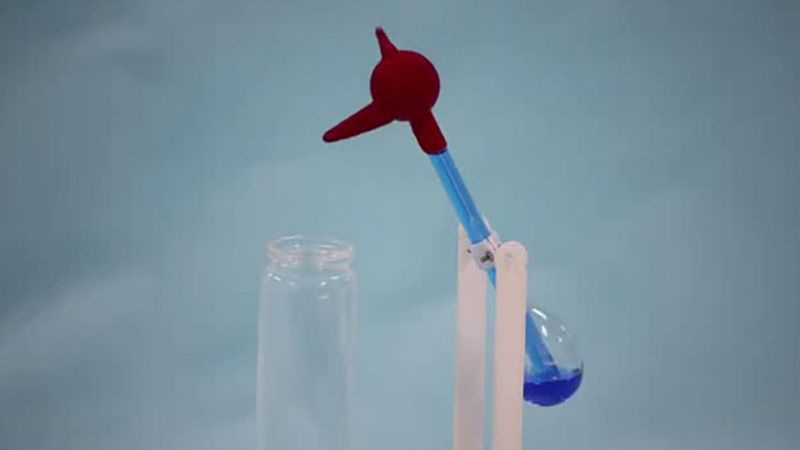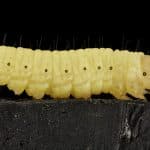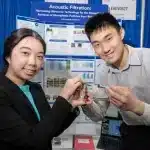Have you ever seen a drinking bird toy? It’s made of two glass bulbs connected by a glass tube. The bottom bulb is filled with a highly volatile liquid, methylene chloride.
On the other hand, the top bulb is shaped like a bird’s head with a beak and a decorative top hat covered with a felt-like material. And then, the bird’s body is supported by two plastic legs.
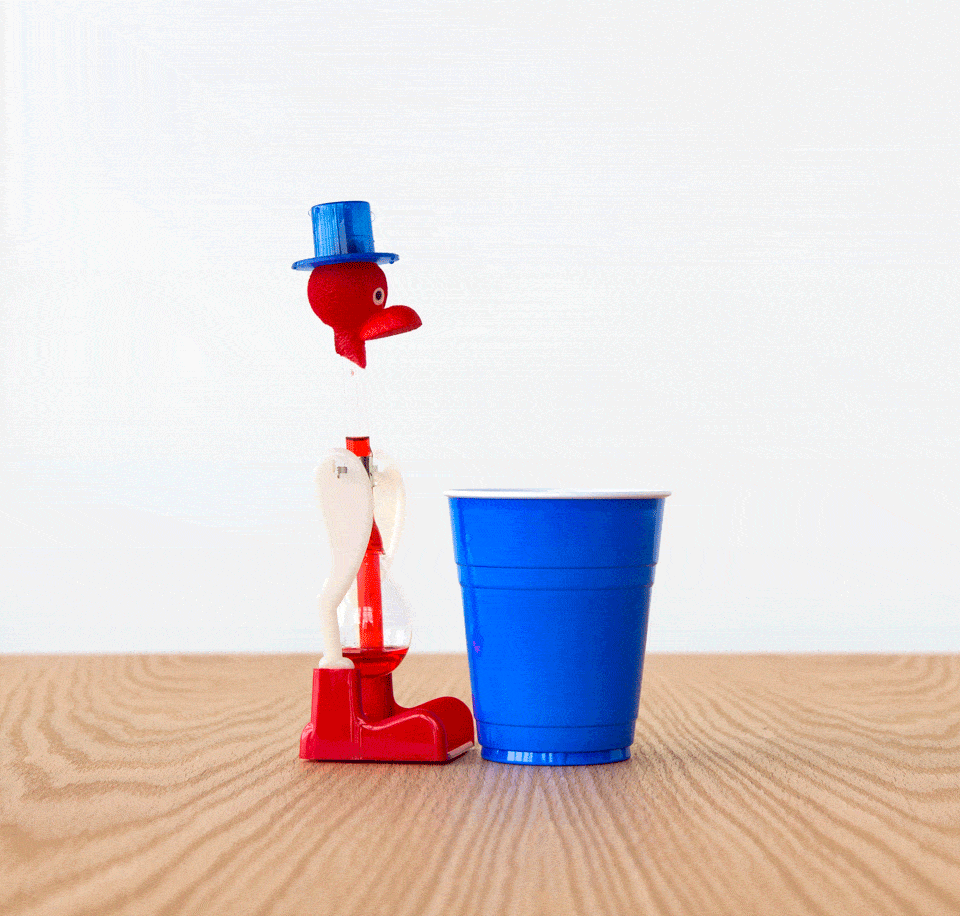
For many years, science classrooms have used the bird toy to teach about thermodynamics. The toy works by using a small amount of water to create heat. This heat causes the bird’s head and tail to have different temperatures. The temperature difference makes the bird tilt forward and dip its beak into a glass of water.
Once the bird’s head dips into the water, the water starts to evaporate. This creates a pressure difference, which causes the liquid in the lower bulb to move up the tube and fill the bird’s head. This makes the bird lean forward and drink from the water before the process repeats.
The vapor then goes back to the bottom bulb, which causes the balance to shift back and the beak to rise again. This cycle repeats, and it seems like the bird is drinking from the cup.
Amazing, right?
But what if I told you that scientists from Hong Kong and China have created an engine using the drinking bird toy to generate electricity by using the power of water evaporation?
Yes! Another awesome use for this bird toy!
The new method converts the energy generated by the bird’s back-and-forth movement into electrical power. Basically, it uses the power of water evaporation to generate electricity.
When sunlight heats the surface of the Earth, water molecules break apart and turn into vapor. This process is called evaporation, affecting water from oceans, lakes, and other surface waters.

In a recent study, scientists built a generator using two modules that collect mechanical energy and placed them on either side of a drinking bird engine, which they got from a commercial toy. They tested the prototype with small electronics like 20 LCDs (liquid crystal displays), temperature sensors, and calculators.
The generator faced a problem with friction which slowed it down, but the researchers used fibers with patterns to reduce the friction and make the device run more smoothly.
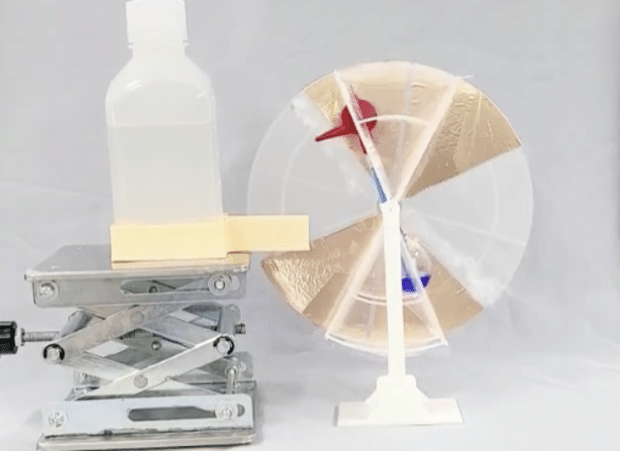
Researchers generated electricity using the “drinking bird” as a power source. They converted energy from water evaporation into electricity. The “drinking bird” produced an output voltage of more than 100 V using only 100 milliliters of water, which is enough to operate small electronic gadgets.
Before this, scientists have tried to transform evaporation energy into electricity but have failed due to low conversion efficiency.
“The drinking bird triboelectric hydrovoltaic generator offers a unique means to power small electronics in ambient conditions, utilizing water as a readily available fuel source,” said Hao Wu, a professor at South China University of Technology and a co-author of the study, in a statement. “I still feel surprised and excited when witnessing the actual results.”
The idea is that one day, the generator could be used in everyday devices like phones, watches, and more.
In the next phase of their research, the team will design a new drinking bird instead of using a store-bought toy. They want to make converting water evaporation to electrical energy more effective.
Zuankai Wang, who is the main author of this study and a professor at Hong Kong Polytechnic University, said that they will also examine different ways to use this device so that they can make it practical for everyday use.
